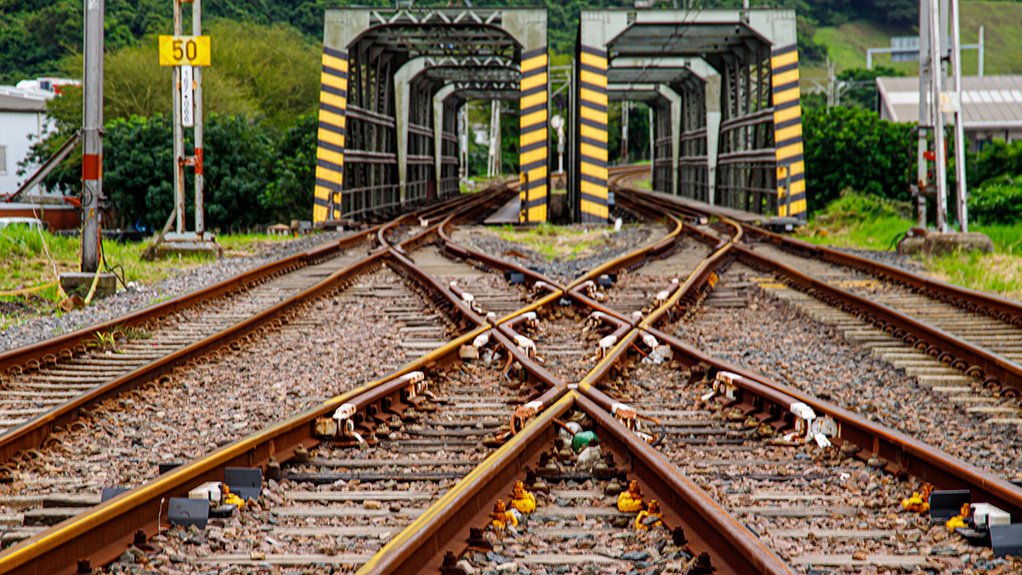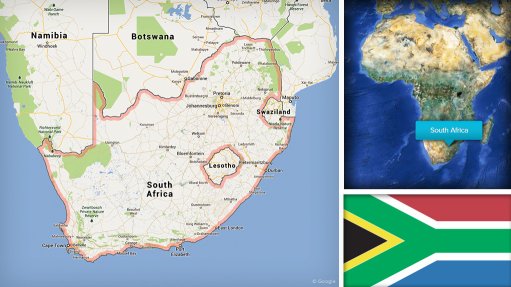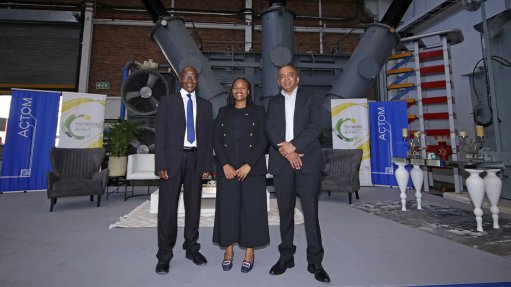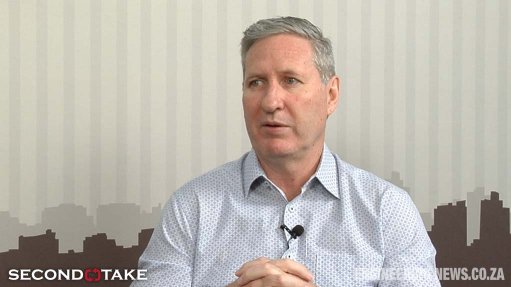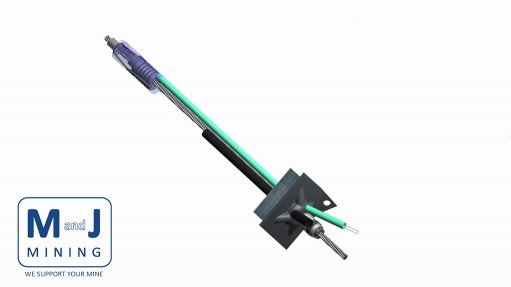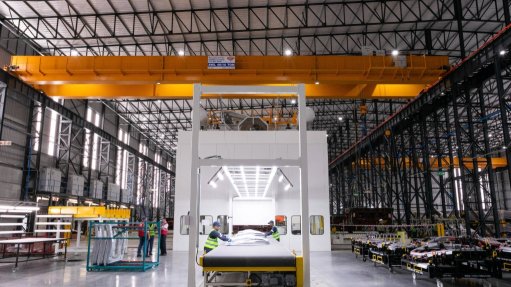Creecy outlines vision of regionally integrated logistics network in Africa
In an opening address delivered by Transport Minister Barbara Creecy at the fourteenth SARA International Rail Conference, on August 26, she said Africa stands at a defining moment as the continent experiences unprecedented trade disruptions, population growth and rapid urbanisation.
Key to Africa’s integration and prosperity is rail, she added, explaining that railways had long been arteries of trade and mobility on the continent, connecting mines to ports, farms to markets and people to opportunities.
African economies were searching for new export markets regionally and globally, owing to import tariffs disrupting long-standing trade and market access agreements. In this context, Creecy emphasised the importance of the African Continental Free Trade Area that provided important economic opportunities.
The Minister mentioned that the African Integrated Railway Network, which emerged from the 2023 Zanzibar Declaration, offers a continental vision of seamless connections, strong manufacturing capabilities and a united approach to infrastructure developments.
“Already we are witnessing vital investments in upgrading and expanding rail networks across Africa,” Creecy noted.
She cited high-speed rail projects, urban commuter expansions and freight corridor modernisations as examples of progress that can redefine how goods and people move, at lower costs, with improved competitiveness and in a more connected manner with global markets.
For Creecy, existing examples of strategic investments and policy reforms having taken shape were the Lobito Corridor, in Angola; the Nacala Corridor, in Mozambique and Malawi; the Beitbridge–Bulawayo Railway, in Zimbabwe; and the Tazara project linking Tanzania and Zambia.
“This transformation is not just about building more tracks, but creating a modern, interconnected and efficient African rail system that links our cities, countries and regions – making borders gateways rather than barriers,” Creecy said.
However, she stressed that investing in rail alone was not enough to achieve objectives. Modern supply chains mean rail must be integrated with ports, roads and inland logistics hubs.
Creecy also acknowledged that countries must harmonise regulations, standards and procedures across borders so that goods could move easily within the free market area.
LOCAL LOGISTICS
She also shared how the National Rail Policy of South Africa had helped to establish the principle that rail infrastructure would remain State-owned, but with opportunities for the private sector to access rail operations.
The Transnet Rail Infrastructure Manager estimates that the 11 new private train operating companies shortlisted for access to the network will carry an additional 20-million tonnes of freight a year from the 2026/27 financial year, which will supplement Transnet Freight Rail’s forecast volumes and contribute to government’s target of increasing freight moved on rail to 250-million tonnes a year by 2029.
Creecy said South Africa’s rail reform journey, which included open access to freight rail, would contribute to a more efficient, reliable and sustainable rail system that promoted inclusive growth and job creation.
She confirmed that government was on track to publish its fourth Network Statement for 2026/27 later this year.
The Minister admitted that the state of Transnet’s rail infrastructure and the State’s limited availability of resources for major refurbishment were causes for concern, which made private sector investment critical.
To sustain the economy in the meantime, Creecy said the country could not wait until the private sector participation reached financial close before launching a programme to rehabilitate Transnet’s rail network.
To aid Transnet’s infrastructure development imperatives, government will provide allocations from the National Treasury’s Budget Facility for Infrastructure and allow for current customers to assist in repairing the network without adding to Transnet’s debt burden.
“Reforms such as the separation of infrastructure and operations at Transnet, expanding passenger rail and strengthening the Railway Safety Regulator all serve as examples for the continent,” Creecy stated.
She confirmed that a request for information for passenger rail would be launched in September, as the start of government’s evaluation of private-sector appetite to invest in commuter rail.
Government aims to have 600-million passengers on the Passenger Rail Agency of South Africa’s network within five years.
Creecy also confirmed that a National Rail Master Plan was in the works, which would be a comprehensive, evidence-based framework to guide the transformation of South Africa’s rail sector over the next 30 years. The plan is intended to be completed during the current financial year.
REGIONAL VIEW
Once implemented, the National Rail Master Plan will complement the Southern African Development Community’s Regional Rail Master Plan.
Creecy said countries could, at a regional level, collaborate to assess the state of railway institutions, infrastructure, safety, regulation and intermodal linkages, while building comprehensive data to make projects more financially and technically bankable.
The region’s Rail Master Plan can also help guide railway corridors in need of investment; define short-, medium- and long-term investment programmes; and establish clear appraisal procedures and roles for all stakeholders.
“This structured approach could serve as a blueprint for continental cooperation, inspiring similar frameworks in other African regions,” Creecy emphasised.
For a regionally integrated rail network to realise, however, Creecy said investment in people and climate resilience was also necessary, including training of technicians and practitioners who would design and operate the railways of the future, while ensuring railways were sustainable.
She expressed confidence in Africa’s ability to realise a stronger logistics network and, thereby, stronger trade on the continent, which secures a better future for generations to come.
Article Enquiry
Email Article
Save Article
Feedback
To advertise email advertising@creamermedia.co.za or click here
Comments
Press Office
Announcements
What's On
Subscribe to improve your user experience...
Option 1 (equivalent of R125 a month):
Receive a weekly copy of Creamer Media's Engineering News & Mining Weekly magazine
(print copy for those in South Africa and e-magazine for those outside of South Africa)
Receive daily email newsletters
Access to full search results
Access archive of magazine back copies
Access to Projects in Progress
Access to ONE Research Report of your choice in PDF format
Option 2 (equivalent of R375 a month):
All benefits from Option 1
PLUS
Access to Creamer Media's Research Channel Africa for ALL Research Reports, in PDF format, on various industrial and mining sectors
including Electricity; Water; Energy Transition; Hydrogen; Roads, Rail and Ports; Coal; Gold; Platinum; Battery Metals; etc.
Already a subscriber?
Forgotten your password?
Receive weekly copy of Creamer Media's Engineering News & Mining Weekly magazine (print copy for those in South Africa and e-magazine for those outside of South Africa)
➕
Recieve daily email newsletters
➕
Access to full search results
➕
Access archive of magazine back copies
➕
Access to Projects in Progress
➕
Access to ONE Research Report of your choice in PDF format
RESEARCH CHANNEL AFRICA
R4500 (equivalent of R375 a month)
SUBSCRIBEAll benefits from Option 1
➕
Access to Creamer Media's Research Channel Africa for ALL Research Reports on various industrial and mining sectors, in PDF format, including on:
Electricity
➕
Water
➕
Energy Transition
➕
Hydrogen
➕
Roads, Rail and Ports
➕
Coal
➕
Gold
➕
Platinum
➕
Battery Metals
➕
etc.
Receive all benefits from Option 1 or Option 2 delivered to numerous people at your company
➕
Multiple User names and Passwords for simultaneous log-ins
➕
Intranet integration access to all in your organisation



